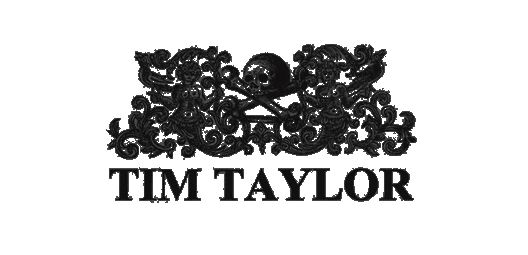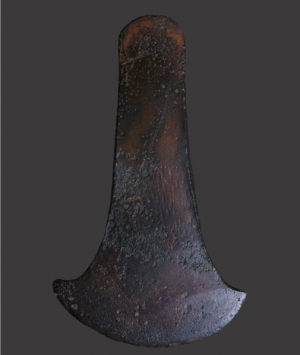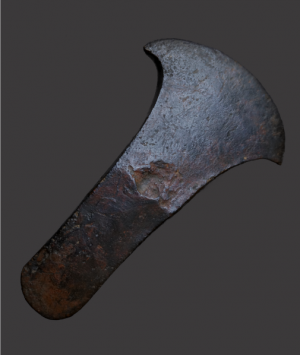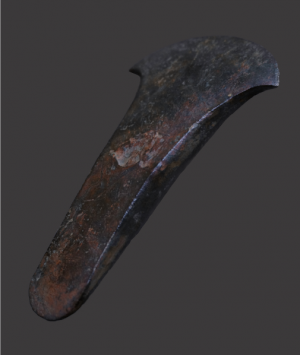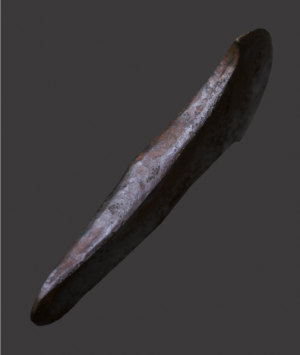Item number: 7397
A Rare British Early Bronze Age Decorated Flat Axe, (1800BC)
Discovered at Catton, Humberside
Ex English Private Collection
During the third millennium BC, knowledge of a revolutionary new technology arrived in prehistoric Britain which heralded the dawn of what is commonly referred to today as, ‘The Bronze Age’.
Archaeology suggests that the earliest bronze weapons seen in Britain were never used or sharpened and were actually symbols of power and status. Their introduction coincided with the appearance of a new, highly distinctive style of pottery vessel, characterised as ‘Beakers’, and attributed to a people referred to as, ‘Beaker culture’, arriving from the continent, bringing with them their knowledge of refining metals.
This momentous period in British history is defined by a rich archaeological legacy which provides fascinating, emotive insight in to the lives and beliefs of the populace at this time, with their complex burial practices involving the placement of personal items along with the dead under round earthen mounds, (barrows), the erection and development of elaborate communal ritual sites such as colossal wood and stone circles, and compelling evidence of widespread spiritual belief closely linked to the growing sense of personal ownership, prestige and the value placed on objects.
This is perhaps best seen in the frequently encountered archaeological evidence of ritual sacrifice, the placement of high status objects, particularly tools and weapons, as votive offerings in sacred places, commonly involving a measure of deliberate, deeply symbolic destruction to these valuable, personal items prior to deposition.
Interest in amassing collections of British antiquities of this period really began in earnest during the 19th century having remained relatively overlooked in previous centuries, largely due to the widespread fascination with the ancient classical civilisations of Greece and Rome. Now, wealthy, ‘gentleman antiquarians’, popularised amateur archaeology in to a sport of discovery, becoming known as, ‘Barrow-diggers’, they roamed the countryside, studying strange anomalies in the landscape, drawing and recording ancient monuments. Many important burial mounds and prehistoric sites were excavated and interpreted during this period with varying degrees of sophistication, the finds often incorporated in to growing country house collections of antiquities.
This rare British early Bronze Age flat axe is in wonderful condition with a fine patina and superb flared cutting edge. It is decorated with a series of incised linear markings known as, ‘rain pattern’, evident on both sides.
Dimensions (Approximate)
Length: 11.7cm Width: 6.8cm (At widest point)
